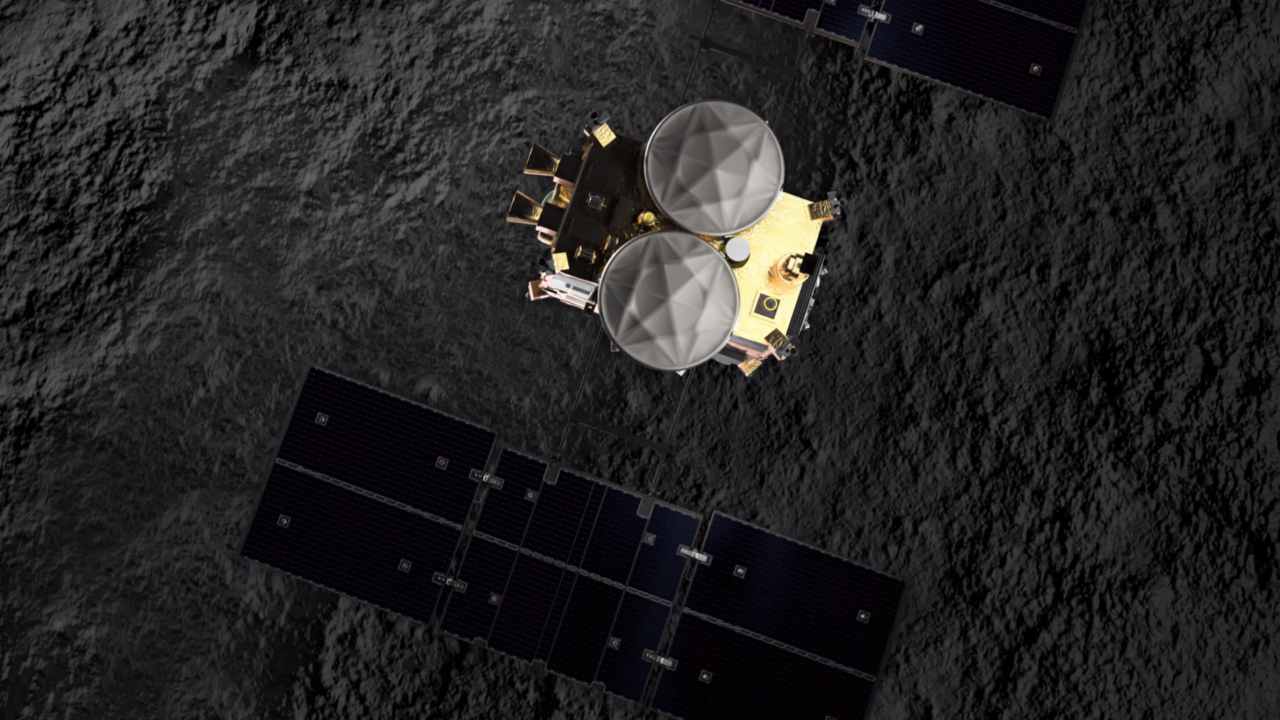A Japanese probe sent to study a near-Earth asteroid and find clues to how our solar system was formed is expected to make a touchdown on the rock later this month. The **Hayabusa2 probe** is expected to make a touch down on the **Ryugu** asteroid at 8 am local time on 22 February, the Japan Aerospace Exploration Agency (JAXA) said.
The touchdown operation to collect a sample from Ryugu will be between February 20th - 22nd. Hayabusa2 is scheduled to begin the descent from February 21, and touchdown on the surface of Ryugu around 8am on February 22 (JST). It is the pinnacle of the mission!
— HAYABUSA2@JAXA (@haya2e_jaxa) February 6, 2019
“The landing point is decided and how we’re going to land is confirmed…we want to do our best to achieve this without making mistakes,” Yuichi Tsuda, the mission’s project manager at JAXA
told AFP. [caption id=“attachment_5235041” align=“alignnone” width=“1280”] An artistic representation of the Hayabusa-2 probe making its long-awaited touchdown. DLR[/caption] The probe is approaching its big milestone three years after it blasted off towards a diamond-shaped asteroid in 2014. In October, JAXA announced that it was putting off the touchdown for a few months to better prepare after data collected by the probe on its approach showed
**how much more rugged the asteroid's surface was** than they expected. Around the same time, two 10-kilogram
**observation rovers** and
**its MASCOT** — Mobile Asteroid Surface Scout — lander
**were deployed** from the orbiting Hayabusa-2 spacecraft
**onto Ryugu's surface** . [caption id=“attachment_5285471” align=“alignnone” width=“1280”]
Asteroid Ryugu being its rocky self. Image: Hayabusa2/JAXA[/caption] Built with sensors,
**Hayabusa-2** can take images at different wavelengths, study mineral composition using its high-power microscope, read surface temperatures and detect the strength of magnetic fields in and around the asteroid. The $260 million-Hayabusa2 mission was launched in December 2014, and is expected to return with
**samples from Ryugu** in 2020. By collecting these samples from Ryugu, scientists are looking for answers about how the universe and the life in it came to exist, and whether elements from space helped give rise to life on Earth.


)
)
)
)
)
)
)
)
)



